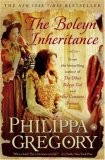Summary | Excerpt | Reading Guide | Reviews | Beyond the Book | Read-Alikes | Genres & Themes | Author Bio

This article relates to The Boleyn Inheritance
Philippa Gregory was born in Kenya in 1954, and educated in England
gaining a BA degree in history from the University of Sussex and a PhD in 18th
century literature from Edinburgh University. For a time she worked as a
journalist but took to full time writing after the success of her first novel
Wideacre, which was written as she completed her PhD. It was the first of a
trilogy (1987-1990) including The Favored Child and Meridon. This
trilogy was followed by Earthly Joys (1998) and Virgin Earth
(1990) set in the English civil war. After this she wrote a number of
stand-alone novels dipping into a variety of genres leaning to romance before
truly hitting her stride in 2001 with the publication of The Other Boleyn
Girl, since then she has focused exclusively on the Tudor period.
She lives in the North of England with her family and, in her spare time, runs a
charity that digs wells for schools in The Gambia, enabling the children to grow
food to eat while at school, with any surplus sold by the schools to buy
supplies.
Full biography at BookBrowse.
A Pictorial Tour of The Boleyn Inheritance: By the time The Boleyn
Inheritance opens
Henry
VIII is about 50 years old, in poor health, probably suffering from gout,
possibly syphilis, and has an open festering wound in his leg that won't heal
(he hadn't always been old, fat and smelly - in his youth he'd been considered
quite dashing and a lot slimmer, as can be seen by the
armor
he wore in his early twenties). He was already down three
wives (Catherine of
Aragon, Anne Boleyn and Jane Seymour) and eager to marry again in order to
fulfill his desperate desire for male heirs - his only son was a sickly boy born
to Jane Seymour, who died shortly after giving birth to him.
In an effort to find a new royal bride,
Hans Holbein was sent to mainland Europe to paint portraits of various women
of good breeding stock, from which Henry selected
Anne
(sister to the Duke of Cleves, a small Duchy in the North-West of modern day
Germany, close to the border with Holland). Anne was unused to the glamour and
wealth of the English court and was probably quite overwhelmed with the grandeur
of the royal residences such as Whitehall Palace (later destroyed by fire),
Greenwich Palace and
Hampton
Court Palace.
One of Anne's maids-in-waiting was
Katherine
Howard (cousin of Anne Boleyn and niece of the influential and manipulative
Duke of Norfolk). Katherine quickly caught Henry's eye, and in a
matter of months Anne had been cast off in favor of young Katherine. Anne kept
her head in more ways than one and retired to
Richmond Palace; poor old Katherine didn't do so well and ended up in the
Tower of London.
"Divorced, beheaded, died, divorced, beheaded, survived".
No doubt we're all familiar with that old mnemonic for remembering Henry VIII's
wives but, like so much history that we learned when young, the facts are a
little more complicated and depend on your point of view. For example, if you
asked Henry, he would probably admit to having two, perhaps three, wives;
certainly not six!
Coming Soon: The BBC made a TV adaptation of Gregory's first Tudor novel, The Other Boleyn Girl, in 2003. A movie version was filmed in 2006 and is scheduled for release in February 2008.
![]() This "beyond the book article" relates to The Boleyn Inheritance. It originally ran in January 2007 and has been updated for the
August 2007 paperback edition.
Go to magazine.
This "beyond the book article" relates to The Boleyn Inheritance. It originally ran in January 2007 and has been updated for the
August 2007 paperback edition.
Go to magazine.
Your guide toexceptional books
BookBrowse seeks out and recommends the best in contemporary fiction and nonfiction—books that not only engage and entertain but also deepen our understanding of ourselves and the world around us.